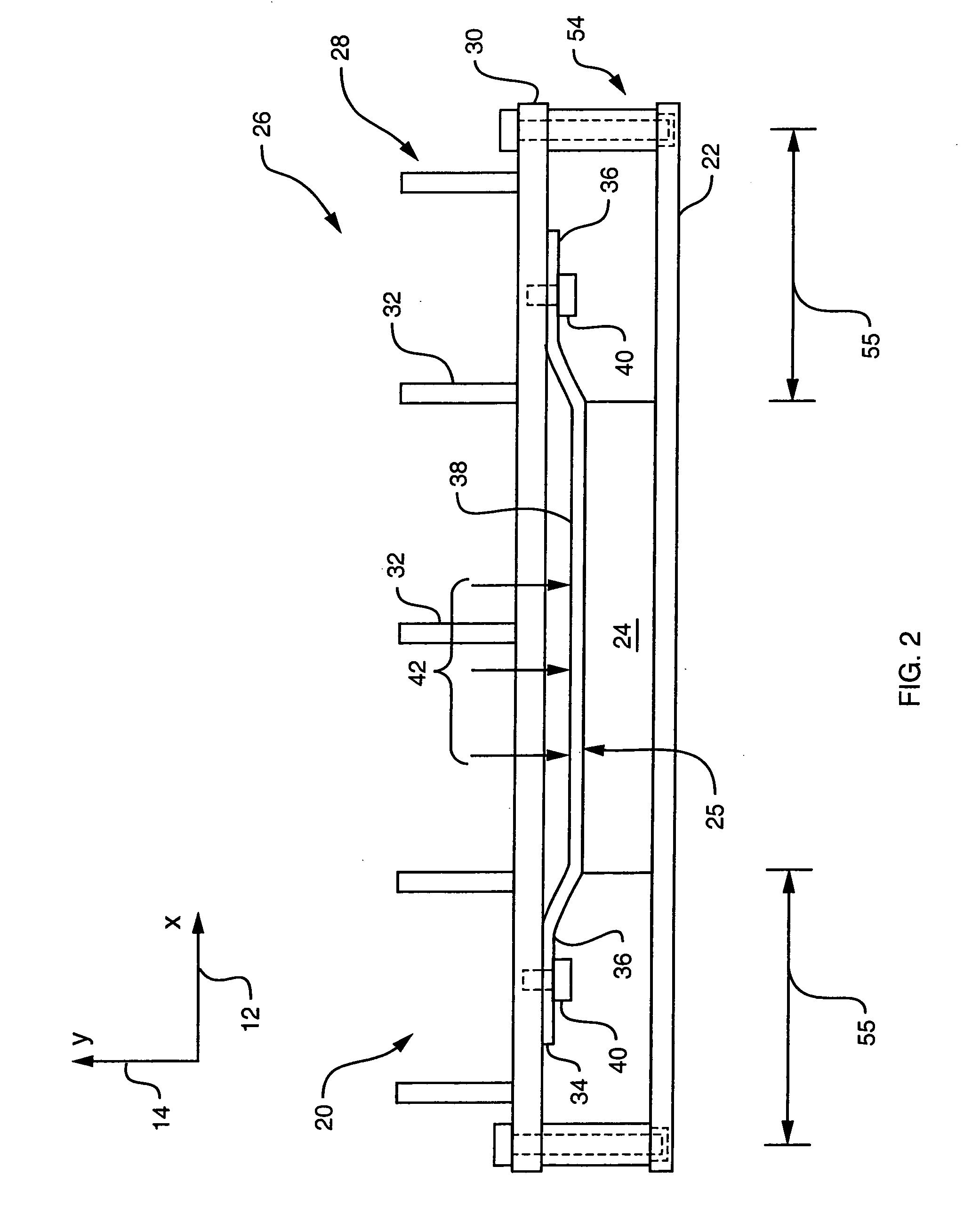Methods and apparatus for thermally coupling a heat sink to a circuit board component
a technology of circuit board components and heat sinks, which is applied in the direction of cooling/ventilation/heating modifications, semiconductor devices, semiconductor/solid-state device details, etc., can solve the problems of increasing the risk of ics failure, mechanical tolerance differences, and the like, and achieves the effect of minimizing the risk of fracture of the solder joint, and limiting the amount of stress
- Summary
- Abstract
- Description
- Claims
- Application Information
AI Technical Summary
Benefits of technology
Problems solved by technology
Method used
Image
Examples
Embodiment Construction
[0022]Embodiments of the present invention provide mechanisms and techniques for thermally coupling a heat sink to a circuit board component. A heat sink has a flexure member attached to a base of the heat sink and located between the base and an associated circuit board component. As the heat sink attaches to a circuit board carrying the circuit board component, the flexure member conforms to the surface of the circuit board component, thereby thermally contacting the circuit board component. The flexure member absorbs local tolerance differences on the circuit board component to provide a relatively uniform stress across the surface of the circuit board component. The flexure member also limits the amount of stress generated by the heat sink on the circuit board component when the heat sink attaches to the circuit board. When used in conjunction with a heat sink spanning several circuit board components, the flexure member absorbs global tolerance differences among the circuit boa...
PUM
 Login to View More
Login to View More Abstract
Description
Claims
Application Information
 Login to View More
Login to View More - R&D
- Intellectual Property
- Life Sciences
- Materials
- Tech Scout
- Unparalleled Data Quality
- Higher Quality Content
- 60% Fewer Hallucinations
Browse by: Latest US Patents, China's latest patents, Technical Efficacy Thesaurus, Application Domain, Technology Topic, Popular Technical Reports.
© 2025 PatSnap. All rights reserved.Legal|Privacy policy|Modern Slavery Act Transparency Statement|Sitemap|About US| Contact US: help@patsnap.com



